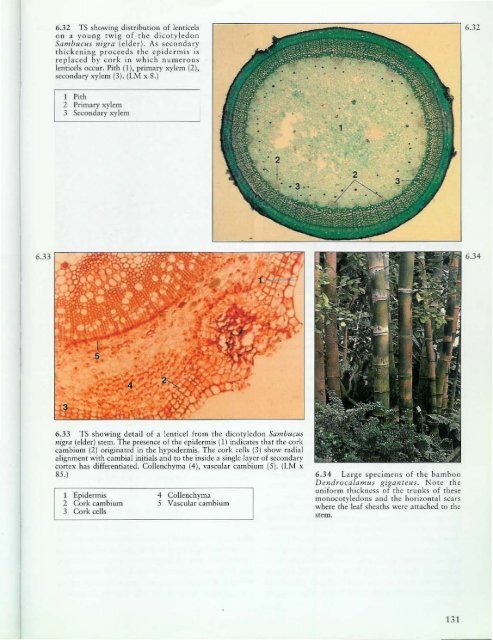Create successful ePaper yourself
Turn your PDF publications into a flip-book with our unique Google optimized e-Paper software.
6.33<br />
6.32 TS showing distribution of lenticels<br />
on a young twig of the dicotyledon<br />
SambuClIS uigra (elder). As secondary<br />
thickening proceeds the epidermis is<br />
replaced by cork in which numerous<br />
lenticels occur. Pith (1), primary xylem (2),<br />
sa:ondary xylem (3). (L\1 x 8.)<br />
I Pith<br />
2 Primary xylem<br />
3 Secondary xylem<br />
6.33 TS showing detail of a lenticcl from the dicotyledon SamUIICilS<br />
nigra (elder) stem. The presence of the epidermis (1) indicates that the cork<br />
cambium (2) originated in the hypodermis. The cork cells (3) show radial<br />
alignmcT11 with cambial initials and to the inside a single layer of secondary<br />
cortex has differentiated. Collenchyma (4), vascular cambium (5). (LM x<br />
85.)<br />
1 Epidennis<br />
2 Cork cambium<br />
3 Cork cells<br />
4 Collench}'ma<br />
5 Vascular cambium<br />
6.34 Large specimens of the bomboo<br />
Delldrocalamus gifl1flteus. Note the<br />
uniform thickness 0 the trunks of these<br />
monocOlyledons and the horizontal scars<br />
where the leaf sheaths were attached to the<br />
stem.<br />
131<br />
6.32<br />
6.34





